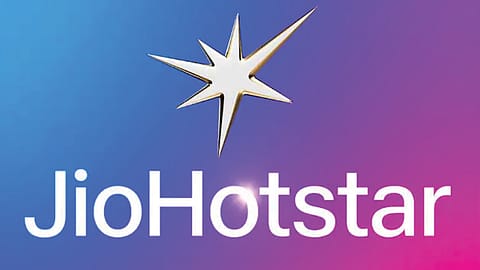JioHotstar confident in delivering local ads to consumers
JioHotstar's technology to allow advertisers to reach audiences based on geography, language, and consumption patterns—a stark contrast to television's broader, less flexible approach.

JioHotstar is betting big on hyperlocal advertising as it strengthens its digital ecosystem, aiming to connect advertisers with region-specific audiences at a granular level. The company’s leadership is confident that advancements in ad technology will enable them to serve highly targeted ads, bringing relevance and returns for both brands and consumers.
“Earlier, we used a one-size-fits-all model—interrupting content with ads every ten minutes,” said Kiran Mani, CEO of digital at JioStar. “Now, movies will have just two to three ad breaks, and ad relevance is paramount,” he added. The platform now allows advertisers to target specific regions and even pin codes, an advancement Mani believes will unlock significant value for small and medium businesses (SMBs).
“The client list for IPL has grown 10 to 15 times from 200-250 since 2019. It is largely powered by our ability on the digital platform to serve small audience cohorts, allowing advertisers with small budgets to meet their brand and performance objectives,” said Sanjog Gupta, CEO of sports at JioStar.
“Now that we're getting to a billion audiences, it also gives us a similar opportunity to go to a wide variety of advertisers on how we get in,” added Mani.
The hyperlocal focus extends beyond large brands to regional players. Kevin Vaz, CEO of entertainment at JioStar, emphasised the rising importance of regional advertising. “Over the last few years, the regional story has picked up in a big way. Brands that once advertised only in the north are now targeting Telugu, Tamil, and other regional markets,” Vaz said. He added that JioHotstar's ad tech advancements are designed to make targeting “sharper and sharper,” enabling advertisers to reach specific markets like Surat or Raipur without buying entire language segments, as is common with television.
Traditionally, small and local brands avoided advertising to maintain competitive margins. “Earlier, I couldn’t promise them targeted reach. Today, I can look them in the eye and say I’ll deliver the right audience and the metrics that matter,” Mani asserted. He explained that many small entrepreneurs view distribution as sufficient marketing, but over time, reliance on shelf space increases dependency on distributors and squeezes margins. “Hyperlocal advertising gives these brands a chance to build their own consumer base,” Mani added.
JioHotstar's technology to allow advertisers to reach audiences based on geography, language, and consumption patterns—a stark contrast to television's broader, less flexible approach. “With TV, you buy entire language markets—all of Hindi, all of Tamil. Digital changes that. An advertiser can now say - I want only Surat,” Vaz explained. “That’s the biggest thing we’re working on—getting pin-code-level targeting as sharp as possible."
Recommended Stories
This precision will potentially not only enhance effectiveness but also improve affordability. “If Hotstar charged ₹149 per quarter, we’re continuing with that. Jio Cinema users paying ₹29 monthly will transition seamlessly without abrupt hikes,” Vaz added.
Despite the rise of subscription models globally, JioHotstar remains committed to an ad-led ecosystem. “Advertising is still by far the biggest revenue stream,” Mani said. “Shifting to a subscription-first model would make the product unaffordable. Our principle is access first, and affordability follows.”
JioHotstar's twin-engine approach—advertising and subscription—is designed to sustain growth while ensuring advertisers can effectively engage consumers. Gupta underscored the consumer-centric design, “We’ve simplified the platform experience and subscription structure to focus on what users want—be it content or ads.”
As JioHotstar advances its ad tech, the potential for hyperlocal advertising—once dominated by global platforms like Facebook and Google—is set to expand. “Clicks are no longer the metric for SMBs. What matters is how many people genuinely visited their store, whether online or offline. Today, we can deliver on that promise,” Mani concluded.
(INR CR)
With this sharpened focus on relevance and affordability, JioHotstar aims to not only revolutionise digital advertising but also empower regional brands to compete effectively in India’s consumer landscape.